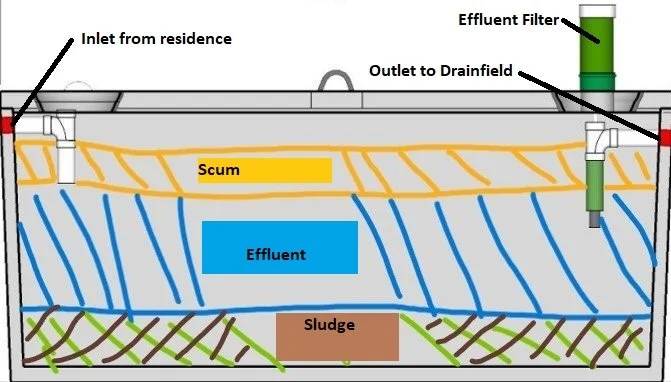How does a septic tank work?
Everything flushed down the sewer in your house will end up in the septic tank. Once in the septic tank the solids will settle down to the bottom of the tank.
The bottom of the tank is referred to as the sludge. This is often the waste from your body and TP mixed with everything that you should avoid to send down the sink or toilet. (feminine products, wipes, food scraps, etc). These are the heaviest of the solids and a buildup of this layer can cause a failure in your system if not properly maintiained.
The effluent is the wastewater that does not float to the surface or has little to no solids in it. As water is added to the septic tank the effluent flows out the outlet of the tank and into your treatment field. If you have a pressure dose system this flows to your dosing tank/ chamber and then into your treatment field.
Your fats, oils, and greases that go into the tank form a scum layer on the surface. This layer may have some lighter solids in it and can also be caused from laundry soaps.
The recommended intervals for servicing your septic tank vary on usage and people living in the home. 3-5 years is the recommendation for having your septic tank cleaned or no more than 25% - 30% scum+sludge levels to total tank holding depth.
How does the treatment field work?
The most common types of treatment fields are gravity/conventional fields, or pressure dosed. The field often consists of Chambers or gavel with perforated pipe.
In these chambers or pipes the effluent percolates into the soil, naturally removing harmful bacteria and viruses. Overtime a Biomat forms a black layer in the soil slowing the movement of wastewater ultimately reducing the capacity of your system.

